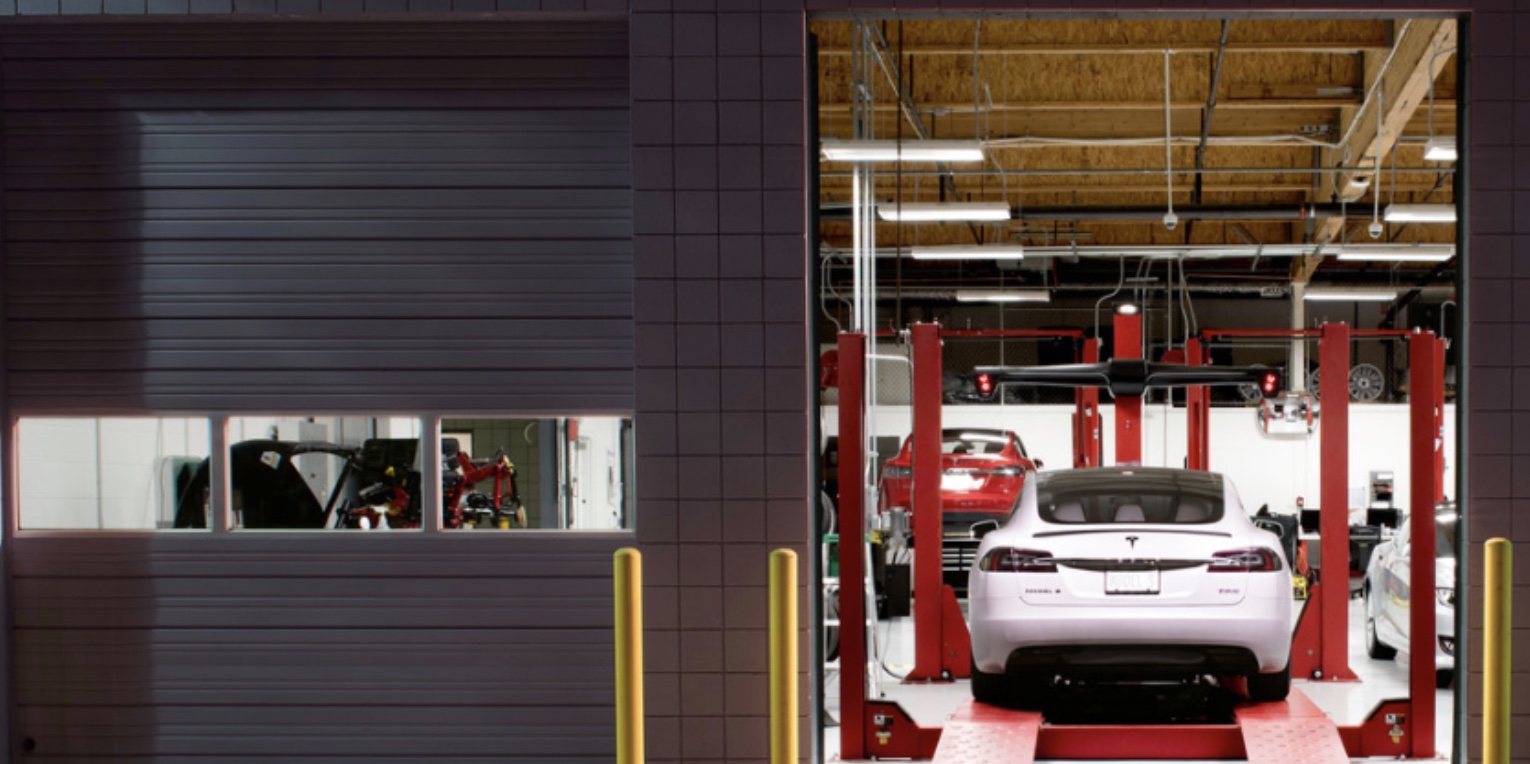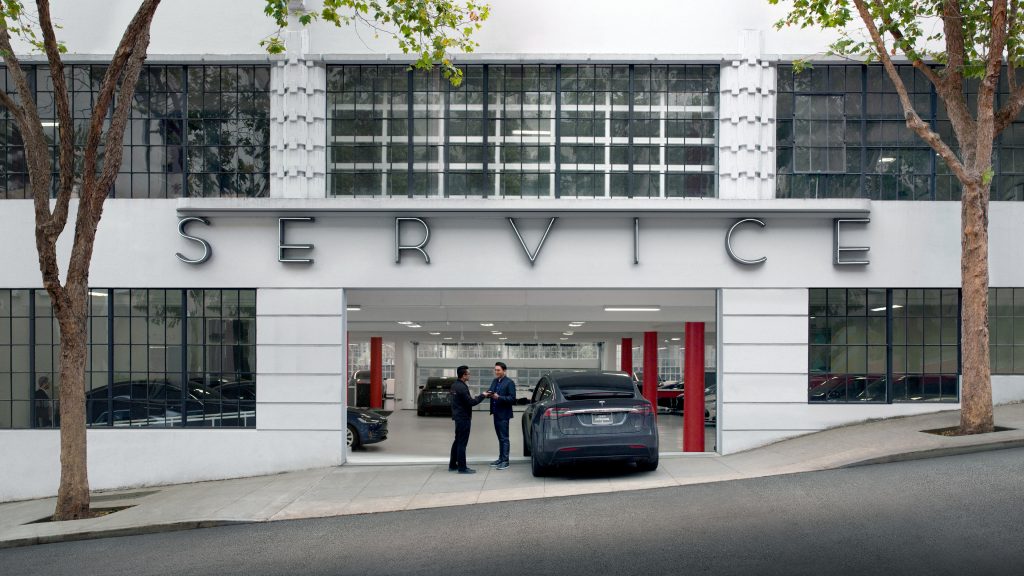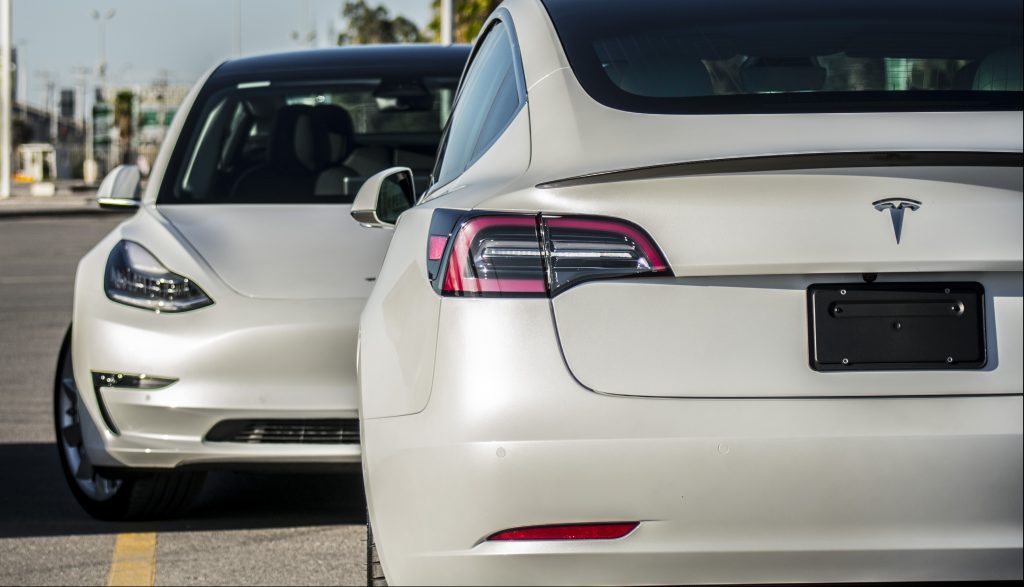

News
Opinion: Tesla has a service problem, and it needs to get addressed as soon as possible
Just recently, Tesla CEO Elon Musk was reminded of the fact that the company needs to expand its network of physical service centers. This is a point that needs to be highlighted these days, especially as Tesla’s vehicle production and deliveries reach new records. With Tesla poised to start producing vehicles by the millions in the near future, it is time for the company to acknowledge its service issues and ensure that its service network expansion sees the same level of dedication as its Supercharger Network ramp.
Tesla may be evolving into a robotics and AI company, but at the end of the day, it is also an electric car maker. And while EVs require far less service than their combustion engine-powered counterparts, they still need service and maintenance from time to time. This is especially true in cases of physical repairs such as the replacement of upper control arms, which are better suited for actual service centers.
It should be noted that while Tesla’s mobile service team is excellent and universally appreciated, they cannot address every single concern and repair. This could become a pain point for owners today, especially those who require repairs and maintenance that could not be accomplished by the mobile service team. Some Tesla owners have shared on social media that at times, they could end up traveling for hours just to get to the nearest service center. This system creates a negative ownership experience that could be detrimental to Tesla in the long run.

“Good Service” is Better Than “No Service” — At Least for Now
The company, after all, is producing vehicles at a scale that would have scared the pants off EV skeptics just a handful of years ago. Tesla will likely produce and deliver over a million vehicles per year within the next year or two, and by that time, the repair and maintenance needs of customers would likely be more substantial. A good portion of the company’s fleet would also be comprised of older vehicles then, some of which would likely require more maintenance and repairs.
The issue of the company’s lack of service centers has been brought up in past earnings calls, and most of the time, Tesla’s executives would respond by pointing to the growth of the company’s mobile service network, which could address an increasing number of repairs and issues from the comfort of owners’ homes or workplaces. Tesla also adopts the idea of the “best service” being “no service” at all. These goals would likely be attained in the future — especially as its factories become more automated and batteries become more advanced — but for now, Tesla has to focus on ensuring that existing customers, both new and old, are supported in the near-term.
Granted, the margin of error for physical service centers is substantial. There is a big human factor that determines if customers are provided a negative or positive experience during a service center visit, after all. This was highlighted recently by @JeffTutorials, the Model 3 owner Elon Musk recently responded to on Twitter, who reported that his experience with the company’s Princeton, NJ Tesla Service Center was nothing short of horrible due to the site’s staff. Such negative experiences could be prevented, however, provided that Tesla adopts strict policies for its service employees.

A $360 Billion Upside
Ultimately, there seems to be little downside to Tesla ramping its service centers at a similar pace as its Supercharger Network, which is already one of, if not the, best rapid charging system in the world. Apart from improving its customers’ overall ownership experience, expanding its service network would also allow Tesla to tap into a large, lucrative market. In Europe, for example, Tesla could breach the company car segment, which is worth $360 billion annually. Company cars are huge in Europe, with 60% of all new vehicle sales being made through corporate channels.
SAP SE, a German software maker and one of Europe’s largest tech companies, noted back in May that its employees are actually very interested in Tesla’s electric cars. And while it provides vehicles to its workers, SAP SE simply cannot commit to Teslas just yet because of the company’s poor service center network in the region. The same was true for chemicals giant BASF SE, which noted that it could not offer Teslas as a company car option for its 50,000 German employees until service centers are expanded.
It’s important to note is that improving service is not an “either/or” situation. Yes, mobile service could be ramped to address an increasing number of issues, but the company could also expand its physical service centers at the same time, and just as aggressively. Fortunately, Tesla does seem to have this in its plans, as confirmed by Elon Musk on Twitter. And if Tesla is indeed expediting its service center openings, then the company would effectively address one of its customers’ most persistent pain points.
Plus, in the long-term, wouldn’t service centers be a good site for Tesla Bots to practice their physical work capabilities?
Don’t hesitate to contact us with account tips. Just send a message to tips@teslarati.com to give us a heads up.
News
Tesla launches in India with Model Y, showing pricing will be biggest challenge
Tesla finally got its Model Y launched in India, but it will surely come at a price for consumers.

Tesla has officially launched in India following years of delays, as it brought its Model Y to the market for the first time on Tuesday.
However, the launch showed that pricing is going to be its biggest challenge. The all-electric Model Y is priced significantly higher than in other major markets in which Tesla operates.
On Tuesday, Tesla’s Model Y went up for sale for 59,89,000 rupees for the Rear-Wheel Drive configuration, while the Long Range Rear-Wheel Drive was priced at 67,89,000.
This equates to $69,686 for the RWD and $78,994 for the Long Range RWD, a substantial markup compared to what these cars sell for in the United States.
🚨 Here’s the difference in price for the Tesla Model Y in the U.S. compared to India.
🚨 59,89,000 is $69,686
🚨 67,89,000 is $78,994 pic.twitter.com/7EUzyWLcED— TESLARATI (@Teslarati) July 15, 2025
Deliveries are currently scheduled for the third quarter, and it will be interesting to see how many units they can sell in the market at this price point.
The price includes tariffs and additional fees that are applied by the Indian government, which has aimed to work with foreign automakers to come to terms on lower duties that increase vehicle cost.
Tesla Model Y seen testing under wraps in India ahead of launch
There is a chance that these duties will be removed, which would create a more stable and affordable pricing model for Tesla in the future. President Trump and Indian Prime Minister Narendra Modi continue to iron out those details.
Maharashtra Chief Minister Devendra Fadnavis said to reporters outside the company’s new outlet in the region (via Reuters):
“In the future, we wish to see R&D and manufacturing done in India, and I am sure at an appropriate stage, Tesla will think about it.”
It appears to be eerily similar to the same “game of chicken” Tesla played with Indian government officials for the past few years. Tesla has always wanted to enter India, but was unable to do so due to these import duties.
India wanted Tesla to commit to building a Gigafactory in the country, but Tesla wanted to test demand first.
It seems this could be that demand test, and the duties are going to have a significant impact on what demand will actually be.
Elon Musk
Tesla ups Robotaxi fare price to another comical figure with service area expansion
Tesla upped its fare price for a Robotaxi ride from $4.20 to, you guessed it, $6.90.

Tesla has upped its fare price for the Robotaxi platform in Austin for the first time since its launch on June 22. The increase came on the same day that Tesla expanded its Service Area for the Robotaxi ride-hailing service, offering rides to a broader portion of the city.
The price is up from $4.20, a figure that many Tesla fans will find amusing, considering CEO Elon Musk has used that number, as well as ’69,’ as a light-hearted attempt at comedy over the past several years.
Musk confirmed yesterday that Tesla would up the price per ride from that $4.20 point to $6.90. Are we really surprised that is what the company decided on, as the expansion of the Service Area also took effect on Monday?
But the price is now a princely $6.90, as foretold in the prophecy 😂
— Elon Musk (@elonmusk) July 14, 2025
The Service Area expansion was also somewhat of a joke too, especially considering the shape of the new region where the driverless service can travel.
I wrote yesterday about how it might be funny, but in reality, it is more of a message to competitors that Tesla can expand in Austin wherever it wants at any time.
Tesla’s Robotaxi expansion wasn’t a joke, it was a warning to competitors
It was only a matter of time before the Robotaxi platform would subject riders to a higher, flat fee for a ride. This is primarily due to two reasons: the size of the access program is increasing, and, more importantly, the service area is expanding in size.
Tesla has already surpassed Waymo in Austin in terms of its service area, which is roughly five square miles larger. Waymo launched driverless rides to the public back in March, while Tesla’s just became available to a small group in June. Tesla has already expanded it, allowing new members to hail a ride from a driverless Model Y nearly every day.
The Robotaxi app is also becoming more robust as Tesla is adding new features with updates. It has already been updated on two occasions, with the most recent improvements being rolled out yesterday.
Tesla updates Robotaxi app with several big changes, including wider service area
News
Tesla Model Y and Model 3 dominate U.S. EV sales despite headwinds
Tesla’s two mainstream vehicles accounted for more than 40% of all EVs sold in the United States in Q2 2025.

Tesla’s Model Y and Model 3 remained the top-selling electric vehicles in the U.S. during Q2 2025, even as the broader EV market dipped 6.3% year-over-year.
The Model Y logged 86,120 units sold, followed by the Model 3 at 48,803. This means that Tesla’s two mainstream vehicles accounted for 43% of all EVs sold in the United States during the second quarter, as per data from Cox Automotive.
Tesla leads amid tax credit uncertainty and a tough first half
Tesla’s performance in Q2 is notable given a series of hurdles earlier in the year. The company temporarily paused Model Y deliveries in Q1 as it transitioned to the production of the new Model Y, and its retail presence was hit by protests and vandalism tied to political backlash against CEO Elon Musk. The fallout carried into Q2, yet Tesla’s two mass-market vehicles still outsold the next eight EVs combined.
Q2 marked just the third-ever YoY decline in quarterly EV sales, totaling 310,839 units. Electric vehicle sales, however, were still up 4.9% from Q1 and reached a record 607,089 units in the first half of 2025. Analysts also expect a surge in Q3 as buyers rush to qualify for federal EV tax credits before they expire on October 1, Cox Automotive noted in a post.
Legacy rivals gain ground, but Tesla holds its commanding lead
General Motors more than doubled its EV volume in the first half of 2025, selling over 78,000 units and boosting its EV market share to 12.9%. Chevrolet became the second-best-selling EV brand, pushing GM past Ford and Hyundai. Tesla, however, still retained a commanding 44.7% electric vehicle market share despite a 12% drop in in Q2 revenue, following a decline of almost 9% in Q1.
Incentives reached record highs in Q2, averaging 14.8% of transaction prices, roughly $8,500 per vehicle. As government support winds down, the used EV market is also gaining momentum, with over 100,000 used EVs sold in Q2.
Q2 2025 Kelley Blue Book EV Sales Report by Simon Alvarez on Scribd
-

 Elon Musk2 weeks ago
Elon Musk2 weeks agoTesla investors will be shocked by Jim Cramer’s latest assessment
-

 News3 days ago
News3 days agoTesla debuts hands-free Grok AI with update 2025.26: What you need to know
-

 Elon Musk1 week ago
Elon Musk1 week agoElon Musk confirms Grok 4 launch on July 9 with livestream event
-

 Elon Musk5 days ago
Elon Musk5 days agoxAI launches Grok 4 with new $300/month SuperGrok Heavy subscription
-

 News2 weeks ago
News2 weeks agoTesla Model 3 ranks as the safest new car in Europe for 2025, per Euro NCAP tests
-

 Elon Musk2 weeks ago
Elon Musk2 weeks agoxAI’s Memphis data center receives air permit despite community criticism
-

 News5 days ago
News5 days agoTesla begins Robotaxi certification push in Arizona: report
-

 Elon Musk2 weeks ago
Elon Musk2 weeks agoTesla scrambles after Musk sidekick exit, CEO takes over sales












